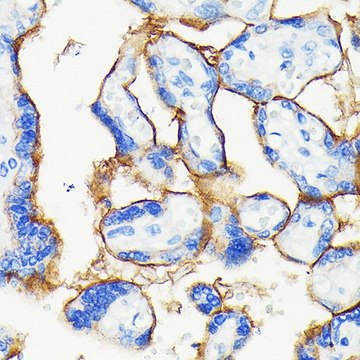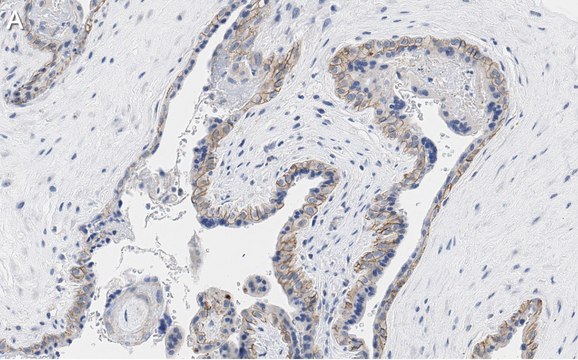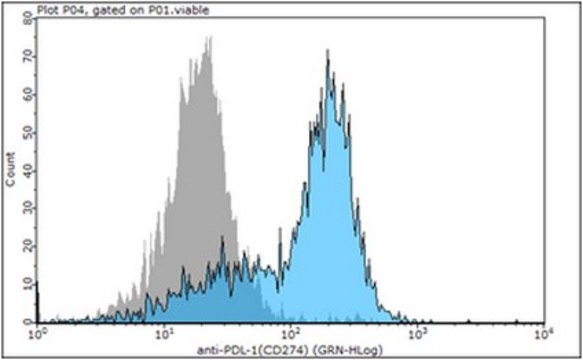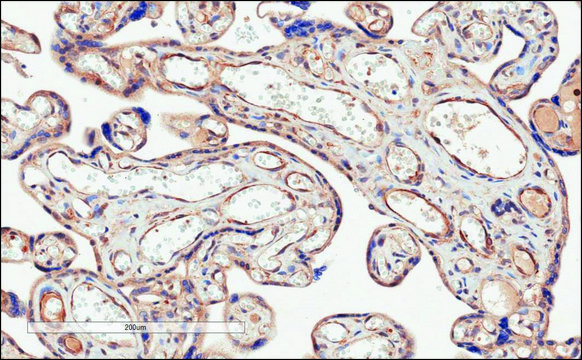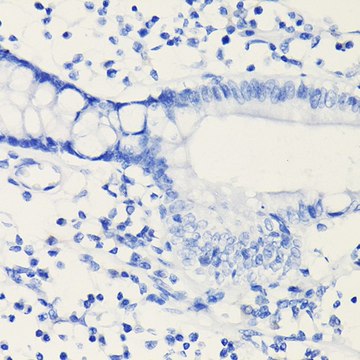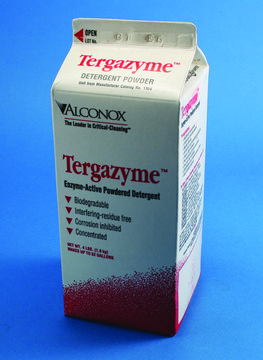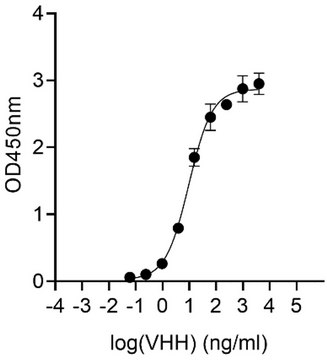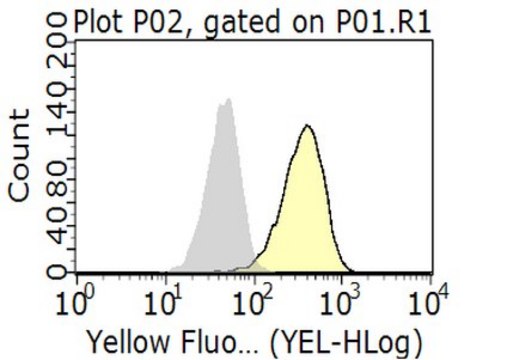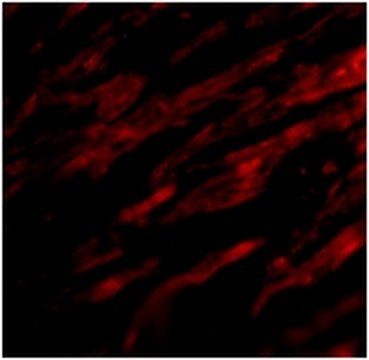General description
Programmed cell death 1 ligand 1 (UniProt Q9NZQ7; also known as B7-H1, B7 homolog 1, CD274, PD-L1, PDCD1 ligand 1, Programmed death ligand 1) is encoded by the CD274 (also known as B7H1, PDCD1L1, PDCD1LG1, PDL1) gene (Gene ID 29126) in human. PD-L1 is a single-pass type I membrane protein that plays a critical role in induction and maintenance of immune tolerance to self. It is expressed on activated T- and B-cells, dendritic cells, keratinocytes, and monocytes. Higher expression has also been reported in heart, skeletal muscle, placenta, and lung. PD-1 and PD-1 ligands 1 and 2 (PD-L1 and PD-L2) are B7:CD28 family members that regulate T cell activation and peripheral tolerance. When engaged together with the TCR, the interaction of PD-1 with its ligands delivers an inhibitory signal to T cell proliferation and cytokine production. While PD-L1 is broadly expressed in hematopoietic and nonhematopoietic cells, PD-L2 expression is highly restricted to antigen presenting cells (APCs), including dendritic cells (DCs) and macrophages. The PD-1 pathway plays a key role in the progressive loss of effector T cell responses during chronic HIV infection. Under some conditions, blockade of this pathway can restore many T cell functions. PD-L1 is initially produced with signal peptide (aa 1-18) sequence, which is subsequently cleaved off to produce the mature protein with a large extracellular (aa 19-238) region that contains an Ig-like V-type domain (aa 19-127) and an Ig-like C2-type domain (aa 133-225), followed by a transmembrane domain (aa 239-259) and a cytoplasmic tail (aa 260-290).
Specificity
Clone 5H1 detects human Programmed cell death ligand 1 (PD-L1). It targets an epitope with in the extracellular domain.
Immunogen
Epitope: extracellular domain
Full-length human recombinant PD-L1.
Application
Anti-PD-L1, clone 5H1, Cat. No. MABC1115, is a mouse monoclonal antibody that detects PD-L1 and has been tested for use in Immunocytochemistry, Immunohistochemistry (Paraffin), and Western Blotting.
Immunohistochemistry (Paraffin) Analysis: A representative lot detected PD-L1 in Immunohistochemistry applications (Bigelow, E., et. al. (2013). J Vis Exp. 3;(71); Spranger, S., et. al. (2013). Sci Transl Med. 5(200):200ra116; Parra, E.R., et. al. (2018). Appl Immunohistochem Mol Morphol. 26(2):83-93; Andorsky, D.J., et. al. (2011). Clin Cancer Res. 17(13):4232-44; Sunshine, J.C., et. al. (2017). Clin Cancer Res. 23(16):4938-4944).
Western Blotting Analysis: A representative lot detected PD-L1 in Western Blotting applications (Parra, E.R., et. al. (2018). Appl Immunohistochem. Mol. Morphol. 26(2):83-93_.
Research Category
Apoptosis & Cancer
Quality
Evaluated by Immunocytochemistry in MDA-MB-231 cells.
Immunocytochemistry Analysis: A 1:50 dilution of this antibody detected PD-L1 in MDA-MB-231 cells.
Target description
33.28 kDa calculated.
Physical form
Format: Purified
Protein G purified
Purified mouse monoclonal antibody IgG1 in PBS without azide.
Storage and Stability
Stable for 1 year at -20°C from date of receipt. Handling Recommendations: Upon receipt and prior to removing the cap, centrifuge the vial and gently mix the solution. Aliquot into microcentrifuge tubes and store at -20°C. Avoid repeated freeze/thaw cycles, which may damage IgG and affect product performance.
Other Notes
Concentration: Please refer to lot specific datasheet.
Disclaimer
Unless otherwise stated in our catalog or other company documentation accompanying the product(s), our products are intended for research use only and are not to be used for any other purpose, which includes but is not limited to, unauthorized commercial uses, in vitro diagnostic uses, ex vivo or in vivo therapeutic uses or any type of consumption or application to humans or animals.
